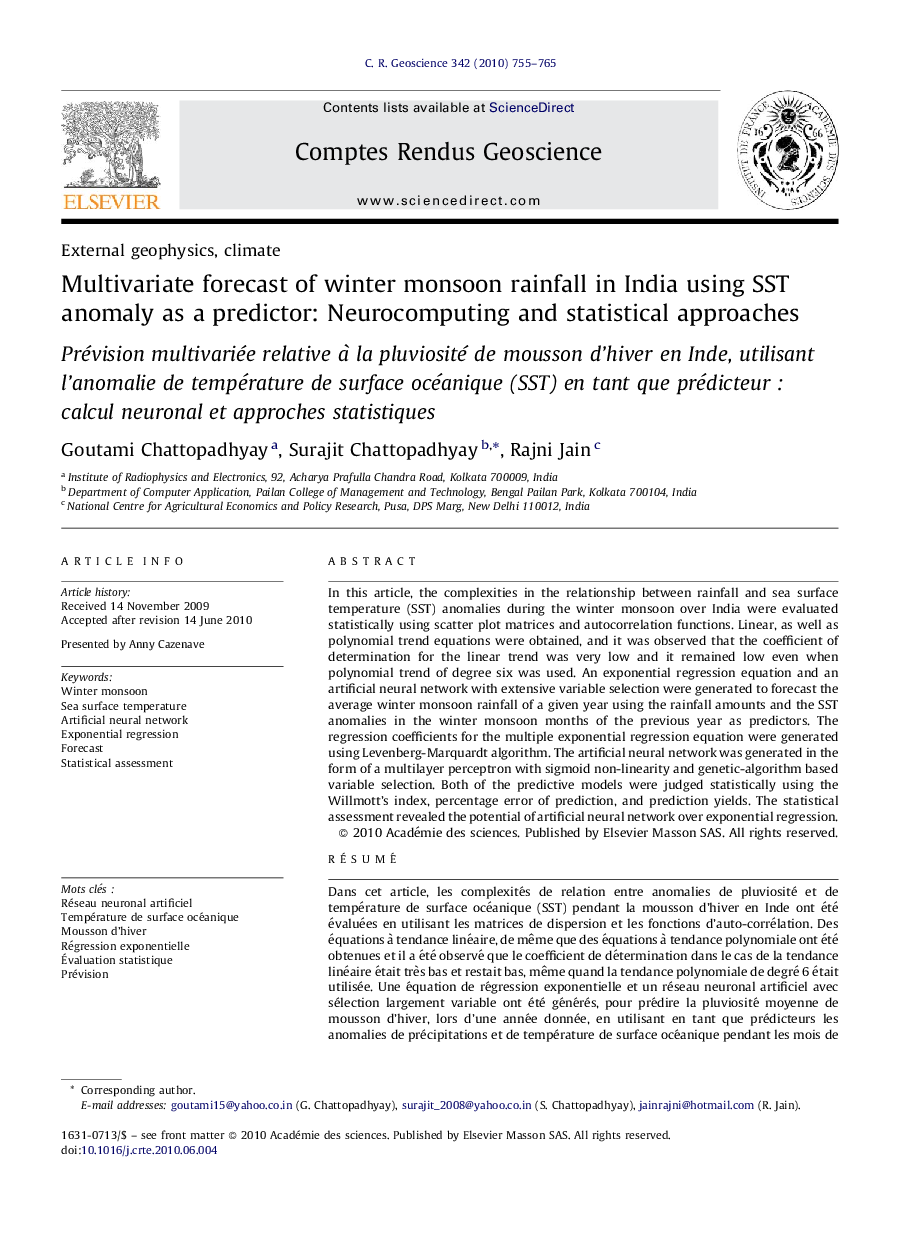| کد مقاله | کد نشریه | سال انتشار | مقاله انگلیسی | نسخه تمام متن |
|---|---|---|---|---|
| 4462288 | 1313487 | 2010 | 11 صفحه PDF | دانلود رایگان |

In this article, the complexities in the relationship between rainfall and sea surface temperature (SST) anomalies during the winter monsoon over India were evaluated statistically using scatter plot matrices and autocorrelation functions. Linear, as well as polynomial trend equations were obtained, and it was observed that the coefficient of determination for the linear trend was very low and it remained low even when polynomial trend of degree six was used. An exponential regression equation and an artificial neural network with extensive variable selection were generated to forecast the average winter monsoon rainfall of a given year using the rainfall amounts and the SST anomalies in the winter monsoon months of the previous year as predictors. The regression coefficients for the multiple exponential regression equation were generated using Levenberg-Marquardt algorithm. The artificial neural network was generated in the form of a multilayer perceptron with sigmoid non-linearity and genetic-algorithm based variable selection. Both of the predictive models were judged statistically using the Willmott's index, percentage error of prediction, and prediction yields. The statistical assessment revealed the potential of artificial neural network over exponential regression.
RésuméDans cet article, les complexités de relation entre anomalies de pluviosité et de température de surface océanique (SST) pendant la mousson d’hiver en Inde ont été évaluées en utilisant les matrices de dispersion et les fonctions d’auto-corrélation. Des équations à tendance linéaire, de même que des équations à tendance polynomiale ont été obtenues et il a été observé que le coefficient de détermination dans le cas de la tendance linéaire était très bas et restait bas, même quand la tendance polynomiale de degré 6 était utilisée. Une équation de régression exponentielle et un réseau neuronal artificiel avec sélection largement variable ont été générés, pour prédire la pluviosité moyenne de mousson d’hiver, lors d’une année donnée, en utilisant en tant que prédicteurs les anomalies de précipitations et de température de surface océanique pendant les mois de mousson d’hiver de l’année précédente. Les coefficients de régression pour l’équation de régression exponentielle multiple ont été générés en utilisant l’algorithme Levenberg-Marquardt. Le réseau neuronal artificiel a été généré sous la forme d’une perception multicouche à non-linéarité sigmoïde et algorithme basé sur une sélection variable. Les deux modèles prédictifs sont jugés statistiquement en utilisant l’index de Willmott, le pourcentage d’erreur de prédiction et le rendement de bonne prédiction. L’évaluation statistique révèle que le réseau neuronal artificiel a un potentiel supérieur à celui de la régression exponentielle.
Journal: Comptes Rendus Geoscience - Volume 342, Issue 10, October 2010, Pages 755–765